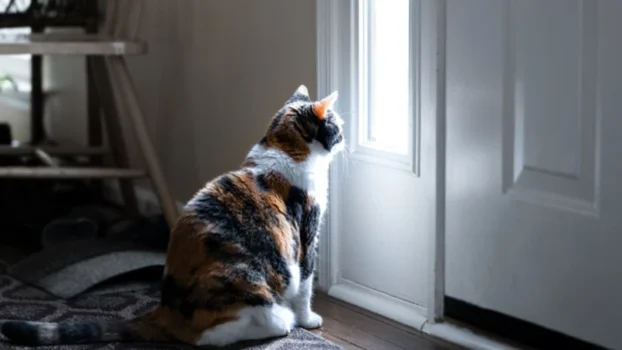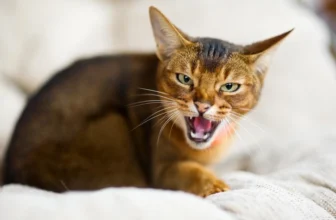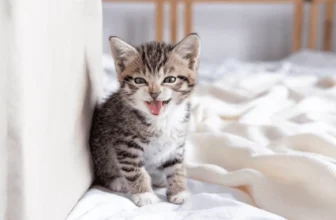As a pet owner, it can be frustrating to come home to a vocal American Wirehair meowing excessively and displaying signs of separation anxiety. If you’re struggling to understand why your furry friend is behaving this way and how you can help them, you’re not alone. Separation anxiety is a common issue among American Wirehairs, and it can manifest in a variety of ways, including excessive meowing. In this article, we’ll explore the signs and causes of separation anxiety in American Wirehairs, its link with meowing, and effective ways to treat and prevent it. Let’s dive into the world of feline behavior and find out how to help your American Wirehair feel more comfortable and relaxed when left alone.
Understanding Separation Anxiety
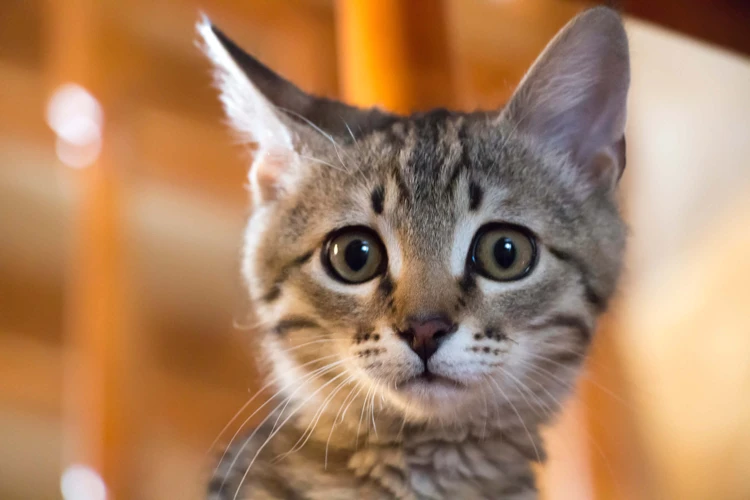
As a cat owner, noticing a sudden increase in your American Wirehair’s meowing can be perplexing, but it could be a sign of separation anxiety. Separation anxiety in cats is a common condition that is often linked to excessive meowing. It can be distressing for both the cat and their owner, but with proper understanding, it is treatable. In this section, we will delve into the signs and triggers of separation anxiety in American Wirehairs, and explain why it could lead to excessive meowing.
Signs and Symptoms of Separation Anxiety in American Wirehairs
Separation anxiety in American Wirehairs can manifest in different ways. Some of the common signs and symptoms of separation anxiety in American Wirehairs include:
- Excessive meowing: American Wirehairs with separation anxiety tend to meow excessively, often in a high-pitched tone. This meowing can continue for hours and may only stop once their owner returns home. This excessive meowing can strain their vocal cords and can lead to other health problems as well.
- Destructive behavior: American Wirehairs with separation anxiety may destroy household items when left alone, such as scratching on furniture, chewing on shoes, or digging into carpets. This behavior may be a result of their anxiety and a way to release their stress.
- Urinating and defecating in inappropriate areas: American Wirehairs with separation anxiety may also not be able to hold their bladder and bowels when left alone, leading to urinating and defecating in inappropriate areas of the house.
- Physical symptoms: Separation anxiety can also lead to physical symptoms in American Wirehairs, such as excessive drooling, panting, and trembling. These physical symptoms are often a result of their anxiety and can affect their overall health in the long run.
If you notice your American Wirehair exhibiting any of these signs or symptoms, it is important to address the issue promptly. Excessive meowing, in particular, can be a sign of underlying anxiety, which makes the cat vocalize more than usual. For more information on excessive meowing in American Wirehairs, refer to our guide “Addressing Excessive Meowing in American Wirehairs.”
Triggers of Separation Anxiety in American Wirehairs
Triggers of Separation Anxiety in American Wirehairs
American Wirehairs are social and affectionate cats that thrive on human attention. However, they can suffer from separation anxiety when left alone for extended periods. Some of the common triggers of separation anxiety in American Wirehairs include:
| Trigger | Description |
|---|---|
| Lack of Attention | American Wirehairs that don’t receive enough attention and affection from their owners may develop separation anxiety. |
| Change in Schedule | Changes in the owner’s schedule, such as going back to work after an extended break, can cause separation anxiety in American Wirehairs. |
| Change in Environment | Moving to a new house or apartment can be stressful for American Wirehairs, leading to separation anxiety. |
| Loss of Companion | A loss of companion, either a feline or human friend, can cause separation anxiety in American Wirehairs. |
| Trauma | Previous traumatic experiences, such as being abandoned or rehomed, can also lead to separation anxiety. |
Understanding these triggers and their potential impact on your American Wirehair can be helpful in preventing and mitigating separation anxiety. By identifying potential triggers, owners can take proactive steps to make their cats feel more secure and prevent excessive meowing. For more tips on addressing meowing in American Wirehairs, check out our article on American Wirehair Meowing Tips.
Why Separation Anxiety Can Lead to Excessive Meowing in American Wirehairs
Separation anxiety is a real problem for American Wirehairs and their owners. This condition is brought about by the fear of being left alone. It can cause an array of problems for the cat, one of which is excessive meowing — a complaint that many cat owners have. In fact, excessive meowing is one of the most common symptoms of separation anxiety in American Wirehairs, and it can be very distressing for both owners and their pets.
Meowing is a cat’s way of communicating, and owners need to pay attention to their pet’s body language and vocalizations to better understand their needs and feelings. When a cat suffers from separation anxiety, excessive meowing can be used as a means of seeking attention or reassuring their owner that they are still there. The cat may feel distressed or abandoned and seek to bring their owner back. Unfortunately, this can lead to friction between cat and owner and cause further stress for the feline.
It’s important to note that excessive meowing may also be caused by other factors, such as hunger, boredom, or medical conditions. However, if it is accompanied by other signs of separation anxiety, such as destructive behavior or avoidance of the litter box, then it is likely that the root cause is separation anxiety.
To address excessive meowing due to separation anxiety in American Wirehairs, owners need to treat the underlying issue of separation anxiety. As mentioned earlier, this can be done through a variety of techniques, including creating a safe space, training and behavior modification, and medication. Additionally, owners can provide adequate exercise and mental stimulation and establish a consistent routine to prevent separation anxiety from developing in the first place. By doing so, owners can help reduce excessive meowing and promote a happier and healthier life for their American Wirehairs.
Effective Ways to Treat Separation Anxiety
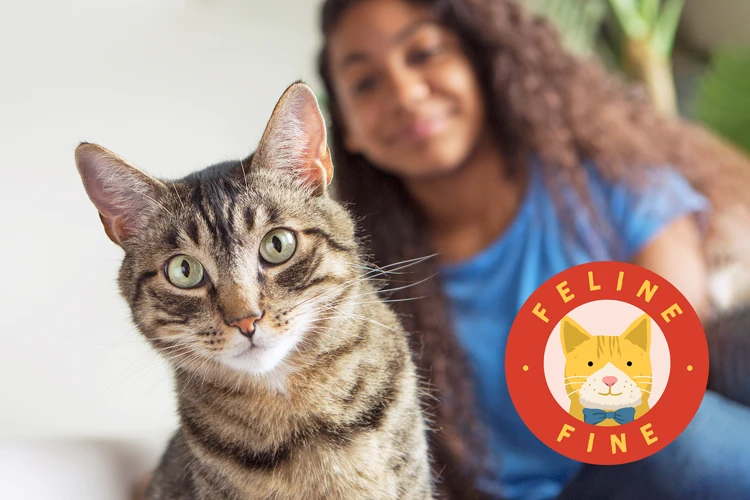
One of the most challenging aspects of caring for an American Wirehair with separation anxiety is finding effective ways to alleviate their distress. Leaving your furry friend alone can trigger intense feelings of fear and anxiety in them, leading to negative behaviors like excessive meowing, destructive chewing, and even house soiling. However, there are several proven methods that can help manage your cat’s separation anxiety and reduce their meowing. Let’s explore some of the best ways to treat separation anxiety and promote a healthy, happy life for your American Wirehair.
Creating a Safe Space for Your American Wirehair
Creating a safe space for your American Wirehair can be a great way to address their separation anxiety and prevent excessive meowing. Providing your cat with a safe and comfortable space can help them feel secure and reduce their anxiety when left alone.
Here are some tips for creating a safe space for your American Wirehair:
| Tips | Explanation |
|---|---|
| Choose a quiet location | Find a quiet and secluded location in your home where your cat can relax and feel safe. Avoid areas with a lot of foot traffic or noise. |
| Provide cozy bedding | Ensure that your cat has a soft and comfortable bed to rest in, such as a cozy cat bed or a soft blanket. |
| Add familiar scents | Include items that have your scent or that of your cat’s in the space, such as a favorite blanket or toys. This will help your cat feel more familiar and comfortable. |
| Leave toys and treats | Leave some toys and treats in the space to provide entertainment and mental stimulation while you are away. |
| Set up a scratching post | Provide a sturdy scratching post or pad in the space to give your cat an outlet for their scratching behavior and help them feel more secure. |
By creating a safe space for your American Wirehair, you can help them feel more comfortable and relaxed when you are away. This may reduce their separation anxiety and prevent excessive meowing.
If you want to further understand your American Wirehair’s body language and behavior, check out our article on interpreting their meows and body language. Additionally, you can learn effective techniques to train your American Wirehair to meow less.
Training and Behavior Modification Techniques
Training and behavior modification techniques can be highly effective in treating separation anxiety in American Wirehairs. Here are some methods to consider:
- Positive Reinforcement: This technique involves rewarding your American Wirehair when they demonstrate calm behavior during alone time. For example, you can give them a treat or praise them when they do not meow excessively while you’re away.
- Desensitization: This involves gradually exposing your American Wirehair to being alone for short periods of time, and then gradually increasing the length of time. This can help them build up their tolerance to being alone and reduce their anxiety. It’s important to start with short periods and to make sure they are comfortable before increasing the time.
- Counter-Conditioning: This technique involves teaching your American Wirehair to associate being alone with positive things, like treats or toys. You can give your cat a special toy or treat only when you leave the house. This will make your cat associate your absence with something positive.
- Calming Signals: Calming signals can help your American Wirehair feel more relaxed while you’re away. You can leave some calming music or a familiar scent, like your shirt or a blanket, for your cat to snuggle with while you’re gone.
- Interactive Toys: Interactive toys can help keep your American Wirehair occupied and distracted during your absence. Toys that dispense treats or puzzles that require problem-solving can be particularly effective.
Using a combination of these techniques can be the most effective way to modify your cat’s behavior and reduce their separation anxiety. It’s important to remember that behavior modification takes time and patience, but the results can be very rewarding for both you and your American Wirehair.
Medications and Supplements for Separation Anxiety
When it comes to treating separation anxiety in American Wirehairs, medication and supplements can provide additional support. However, it’s important to note that these options should be used in conjunction with behavioral training and only under the guidance of a veterinarian.
Medications for Separation Anxiety:
- Antidepressants: These medications can help regulate your cat’s mood and reduce anxiety levels. Commonly prescribed antidepressants for cats include fluoxetine, clomipramine, and amitriptyline.
- Benzodiazepines: These medications work by suppressing your cat’s central nervous system, inducing a sense of calm. However, they can be habit-forming and should only be used short-term. Commonly prescribed benzodiazepines for cats include alprazolam and diazepam.
Supplements for Separation Anxiety:
- Chamomile: This herb has natural calming properties and can help soothe anxiety in cats. It can be given to cats in capsule or liquid form.
- L-theanine: This amino acid is found in green tea and has been shown to reduce anxiety levels in cats. L-theanine supplements can be given to cats in capsule or chewable form.
- Valerian root: This herb has been shown to have a sedative effect on cats and can help reduce anxiety levels. It can be given to cats in capsule or liquid form.
It’s important to remember that every cat is different, and what works for one cat may not work for another. Always consult with your veterinarian before giving your cat any medication or supplement, and closely monitor their behavior and reactions. With patience and consistency, you can help your American Wirehair overcome separation anxiety and lead a happier, more contented life.
Seeking Professional Help for Your American Wirehair
When dealing with severe cases of separation anxiety in American Wirehairs, seeking professional help can be an effective solution. Professional help can come in the form of a veterinarian or a certified animal behaviorist who can provide support and guidance on how to address your cat’s behavioral issues. Here are some ways a professional can help:
- Assessment: A professional can conduct a thorough assessment of your American Wirehair’s behavior to determine the severity of the separation anxiety and the potential triggers. This assessment may include a detailed history of your cat’s behavior and a behavior analysis.
- Treatment plan: Based on the assessment, the veterinarian or animal behaviorist can create a personalized treatment plan that is tailored to your cat’s specific needs. This may include a combination of behavior modification techniques, medications, and environmental changes.
- Medication: In some cases, medications may be necessary to manage the symptoms of separation anxiety. A professional can prescribe appropriate medications and monitor your cat’s response to ensure that they are safe and effective.
- Training: A professional can provide guidance on effective training techniques that are aimed at helping your American Wirehair become more comfortable with being alone. This may include gradual desensitization and counterconditioning techniques.
- Support: Dealing with a cat with separation anxiety can be stressful, and a professional can provide ongoing support and guidance as you work to manage your cat’s behavior.
Remember that seeking professional help should not be seen as a last resort but rather as a proactive approach to managing your cat’s separation anxiety. By working with a professional, you can help your American Wirehair overcome their anxiety and live a happier, healthier life.
Preventing Separation Anxiety in American Wirehairs
As a pet owner, you want your American Wirehair to feel relaxed and content when you leave home. To avoid the stress and frustration of separation anxiety, it is essential to take preventative measures from the outset. By implementing certain strategies, you can establish a consistent routine that will benefit your furry friend’s mental and physical health. In this section, we will explore effective steps you can take to ensure that your American Wirehair feels supported and secure during alone time. So let’s dive in and discover how to prevent separation anxiety in these lovable cats.
Establishing a Consistent Routine for Your American Wirehair
To prevent separation anxiety in American Wirehairs, establishing a consistent routine is vital. This sets expectations for your pet, helping them feel more secure when alone. Below is a table that shows a consistent routine for American Wirehairs.
| Time | Activity |
|---|---|
| 6:00 AM | Wake up, feed breakfast, and go for a walk. |
| 8:00 AM | Interactive playtime and mental stimulation. Provide toys like treat-dispensing balls or puzzles to keep them occupied. |
| 12:00 PM | Give a midday treat and provide access to water. |
| 1:00 PM | Take a short break from work or errands to spend some time with your Wirehair. Playtime, a quick training session, or grooming can offer quality time and keep them mentally stimulated. |
| 4:00 PM | Another feeding time with a small amount of wet food or extra treat. |
| 6:00 PM | Go for an evening walk to help your pet exercise and relax. Offer some cuddle time afterward for bonding. |
| 8:00 PM | Interactive playtime with interactive toys can help your Wirehair settle in for the night and get the mental stimulation they need. |
| 9:00 PM | Wind down and spend some quality time together before bed. This can include cuddling or soft playtime. |
| 10:00 PM | Bedtime. Place your American Wirehair in their cozy bed with some light music to help them sleep. |
With a consistent routine established, your American Wirehair will feel more comfortable being left alone. Ensure that they have access to water and a comfortable bed while you’re away. Implementing this daily routine in their lives will make your pet less prone to anxiety and excessive meowing, leading to a happier and healthier relationship with them.
Providing Adequate Exercise and Mental Stimulation
It’s crucial to provide your American Wirehair with adequate exercise and mental stimulation to prevent separation anxiety. Lack of activity and boredom can lead to destructive behavior and excessive meowing. Here are some ways to keep your furry friend entertained:
| Activity | Description |
|---|---|
| Interactive toys | Provide your cat with toys that require them to solve puzzles or manipulate objects to obtain treats. This type of play can challenge both their physical and mental abilities and keep them occupied for extended periods. |
| Scratching post | Scratching is a natural and necessary behavior for cats, and a good scratching post can provide your American Wirehair with an outlet for this instinctual behavior. It can also satisfy their need to stretch and flex their muscles and keep them active and healthy. |
| Playtime with you | Allocate some time every day to play with your cat. Use toys that mimic prey-like behavior to keep their attention and make sure to provide a variety of toys to avoid monotony. Interact with your cat by using a wand, string, or laser pointer. This play will help strengthen your bond with your American Wirehair while also providing them with needed exercise. |
| Window perches | Providing a window perch will allow your American Wirehair to watch outdoor activities, such as birds and squirrels. This activity can stimulate them mentally and provide entertainment while you are not at home. |
| Regular exercise routine | Make sure your American Wirehair has an established routine for exercise, such as playing fetch or climbing on a cat tree. This will help them maintain a healthy weight, avoid boredom and also keep them physically fit. |
By incorporating these activities into your furry friend’s daily routine, you can help prevent separation anxiety and keep them in a happy and healthy state.
Gradual Introductions to Alone Time
Gradual Introductions to Alone Time
One of the most effective ways to prevent separation anxiety in American Wirehairs is by gradually introducing them to alone time. This process involves slowly increasing the amount of time your pet spends alone until they are comfortable being left by themselves for extended periods.
To do this, you can use an introductory table to keep track of your American Wirehair’s progress:
| Day | Time Spent Alone | Behavior and Reaction |
|---|---|---|
| Day 1 | 5 minutes | Restless, meowing |
| Day 2 | 10 minutes | More relaxed, explores the room |
| Day 3 | 15 minutes | Very engaged with toys, no signs of anxiety |
| Day 4 | 20 minutes | Plays with toys, takes a nap, no anxiety |
| Day 5 | 30 minutes | Relaxed, naps through most of the time alone |
| Day 6 | 45 minutes | No signs of anxiety, eats a treat, plays with toys |
| Day 7 | 1 hour | Comfortable alone, no anxiety |
Tips for Gradual Introductions to Alone Time:
- Start with short periods of alone time and gradually increase the duration over the course of several days or weeks.
- Use toys, treats, or puzzles to keep your American Wirehair engaged while you’re gone.
- Try leaving a piece of clothing with your scent on it to comfort your pet.
- Avoid making a big deal about coming and going. Stay calm and relaxed to help your pet feel the same way.
- Be patient and don’t rush the process. Each pet is different and may need more or less time to adjust to being alone.
By incorporating gradual introductions to alone time into your American Wirehair’s routine, you can help prevent separation anxiety from developing and promote a healthy, happy relationship between you and your furry companion.
Conclusion
After reading this article, it’s clear that separation anxiety can be a common issue for American Wirehairs and can lead to excessive meowing and other unwanted behaviors. However, there are effective ways to address this issue and prevent it from occurring in the first place.
One of the most important things to keep in mind is that patience and consistency are key when dealing with separation anxiety. It’s important to establish a routine for your American Wirehair and provide plenty of mental stimulation and exercise to prevent boredom.
Creating a safe space for your cat and gradually introducing them to alone time can also help them feel more secure in your absence, while training and behavior modification techniques can help them learn to cope with separation.
In some cases, medications and supplements may also be necessary to treat severe separation anxiety, and seeking professional help from a veterinarian or animal behaviorist can be incredibly helpful.
Overall, while separation anxiety can be a challenging issue to deal with, with the right approach and support, American Wirehair cats can learn to feel more comfortable and secure when left alone, helping to reduce excessive meowing and other unwanted behaviors. With patience and care, you can help your cat live a happy and healthy life.
Frequently Asked Questions
What is Separation Anxiety in American Wirehairs?
Separation anxiety is a psychological condition that occurs when your American Wirehair gets distressed when they are separated from their owner or another pet.
How can I tell if my American Wirehair has separation anxiety?
Signs of separation anxiety in American Wirehairs include excessive meowing, destructive behaviour, urinating or defecating around the home, and vocalizing loudly when you leave the house.
What are the triggers for separation anxiety in American Wirehairs?
Triggers for separation anxiety in American Wirehairs include sudden changes in routine, moving to a new home, sudden absence of a family member or pet, and not getting enough socialization or attention from their owner.
Why does separation anxiety lead to excessive meowing in American Wirehairs?
Separation anxiety can cause American Wirehairs to feel scared and alone. Excessive meowing is their way of requesting attention and trying to gain reassurance that you are still there.
How can I treat separation anxiety in my American Wirehair?
Treatment options for separation anxiety in American Wirehairs include creating a safe space, behaviour modification techniques, medication and supplements, and seeking professional help.
What is a safe space for my American Wirehair?
A safe space is a designated area where your American Wirehair can retreat to and feel comfortable when you are not around. This space should include their bed, toys, and any other familiar items that remind them of you.
What are some behaviour modification techniques for treating separation anxiety in American Wirehairs?
Behaviour modification techniques include desensitization and counterconditioning, as well as training exercises that teach your American Wirehair to stay calm and relaxed even when you are not around.
Can medications and supplements help with separation anxiety in American Wirehairs?
Yes, medications and supplements such as anti-anxiety medications and pheromone diffusers can help reduce separation anxiety in American Wirehairs. However, it is important to consult with a vet before starting any medication.
How can I prevent separation anxiety in my American Wirehair?
You can prevent separation anxiety by establishing a consistent routine, providing adequate exercise and mental stimulation, and gradually introducing alone time to your American Wirehair.
What should I do if my American Wirehair’s separation anxiety does not improve?
If your American Wirehair’s separation anxiety does not improve, it may be necessary to seek professional help from a veterinarian or animal behaviourist.

